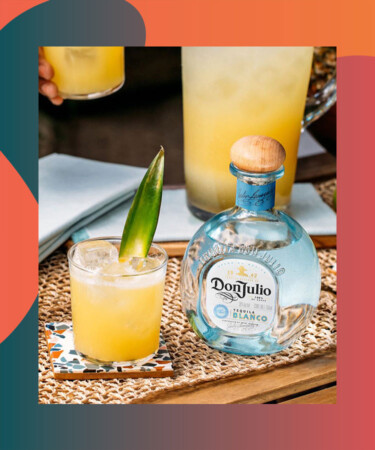In case you haven’t heard, tequila is having a moment right now. A serious moment. Last year, the agave-based spirit overtook sales of American whiskey — including bourbon — and is predicted to overtake vodka as America’s preferred spirit within two years. Over the course of the pandemic, tequila experienced a compound annual growth rate (CAGR) of 20.7 percent from 2020 to 2022, blowing the industry’s total growth rate of 6.7 percent over the same period completely out of the water. Most of tequila’s growth can be attributed to category adoption — like a focus on higher quality ingredients and quality production — and consumers’ desire to trade up for more premium expressions. But with the tequila boom mimicking some of the same patterns of the turn-of-the-century vodka boom, some in the industry fear that the Mexican spirit may be having a Tito’s moment.
Prior to Tito’s introduction to the vodka market, consumers frequently traded up for premium brands like Grey Goose and Kettle One. But once Tito’s launched in 1997 as an affordable, premium vodka for everyday drinking, growth experienced by more luxury brands started to plateau.
Will tequila experience a similar shift? According to the investment banking company Jefferies Group, which analyzed Diageo’s growth in the tequila category over the last few years, the short answer is no, as they claim there are more differences than similarities when it comes to the spirits’ respective rises. However, the investment bank and financial services company did indicate some similarities with the vodka boom that may be pertinent to tequila’s future.
One of the main differences between the growth of vodka and the growth of tequila Jefferies points to is the near-absence of flavored tequilas on the market. Today, the tequila category takes up approximately 10 percent of spirits volume and 17 percent of its value, while vodka contributes 26 percent and 19 percent respectively. However, unlike U.S. vodka — whose growth benefited from flavored expressions — flavored tequila expressions are close to non-existent, leading Jefferies to predict that tequila will be able to achieve a volume and value share of 13 percent and 27 percent respectively by 2027. They also predict that vodka’s growth will peak at a 32 percent volume share and 27 percent value share.
At this time, Jefferies explains that it’s still too soon to point to any tequila fatigue in America. But despite their predictions, Jefferies points to downtrading as a potential hurdle the tequila industry may have to overcome. While they see limited risk in downtrading to cheap mixto tequilas priced at less than $20 a bottle, NielsenIQ has noted some early signs of trading down from the $40-$50 price point (luxury) to bottles priced between $20 and $30 (premium).
Jefferies explains that should this downtrading be indicative of a weaker macroeconomic environment, premium priced brands will likely bounce back. But if trading down is symptomatic of the current tequila cycle, the issue could be structural, potentially due to consumers trying to find more affordable 100 percent agave tequilas. It also could be expressive of the tequila industry as a whole as category appeal widens and interested consumers reach for bottles at a lower price point.
While it seems like tequila will not follow in the exact same footsteps as vodka, it remains to be seen what will become of the beloved agave spirit’s growth.
This story is a part of VP Pro, our free content platform and newsletter for the drinks industry, covering wine, beer, and liquor — and beyond. Sign up for VP Pro now!
